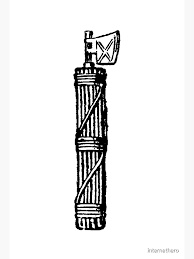And Surgeons
CVMS Bulletin
Making a Difference
in HealthCare for Eastern Virginia
Volume 1: Issue 6
June 2023

“The good physician treats the disease; the great physician treats the patient who has the disease.”
— William Osler
Welcome to the sixth edition of the CVMS Bulletin bringing you updates on the status of healthcare in Eastern Virginia. We hope you find it interesting, informative and enjoyable. Please let us know if there is anything we can do to make it better.

CVMS Status Update
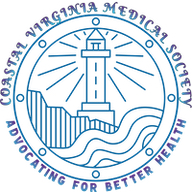
Our name change from Norfolk Academy of Medicine to the Coastal Virginia Medical Society has finally occurred and CVMS is now recognized by the State Corporation Commission. A letter has been requested from the IRS to confirm its acknowledgement of CVMS as a non-profit 501(c)6, which we should receive in a few weeks.
What is a 501(c)6 non-profit?
Section 501(c)6 of the Internal Revenue Code provides for the tax exemption of business leagues, chambers of commerce, real estate boards, and boards of trade, which are not organized for profit and no part of the net earnings of which inures to the benefit of private individuals or insiders of the group. Contributions to 501(c)6 organizations are not deductible as charitable donations, but they may be deductible as a trade or business expense if ordinary and necessary in the conduct of the taxpayer's business. Dues that are paid by members are tax exempt to the extent that the funds are used for promotion of common interests as long as a substantial portion of the dues are not used for political purposes. 501(c)(6) organizations are allowed to attempt to influence legislation that is related to the common business interests of its members, but not to fund political campaigns of specific individuals.
Our first in-person official Board meeting has been scheduled for June 1, 2023, the minutes of which will be posted on the website. *The agenda for this meeting is posted below.
As previously mentioned, our plans for the year will include:
1. Our advocacy plans will focus initially on price transparency and Certificate of Need (CON) issues.
2. We would like to consider at least one dinner meeting for all the members before the end of the year.
3. We will begin setting up CME programs for our members hopefully at least once a month.
4. We will work on establishing more member benefits and keep you informed on our progress.
5. We will select one or more delegates to attend the Medical Society of Virginia's Annual Meeting in October, please let us know at 757-816-8399.
5. All members will receive an invitation letter to officially join (or rejoin) our new Medical Society in the near future. We truly hope you will seriously consider being a part of this new endeavor to make a difference in improving healthcare in eastern Virginia. There is strength in numbers. The more members we have, the stronger we become, and the louder voice we will have.
Protocols

Protocols for diagnosis or treatment can be helpful as guidelines for us to remember what to do in certain situations. When a patient comes in to the ER with a particular ailment like community-acquired pneumonia, it is nice to have a protocol already written up and all you have to do is check off what you want to order. The same goes for when you have the diagnosis of pulmonary embolism, the protocol tells you what to do. They are based on solid evidence-based medicine, from randomized controlled studies that tell us that when a patient is a certain age and when they have a completely normal heart and kidney function and if they are not bleeding elsewhere, this is what you do. But what if you have a patient with a pulmonary embolism, acute CHF, renal failure, and an active GI hemorrhage, who has aspirated and now has pneumonia as well, and is developing respiratory failure. Is there a protocol for that? Where is the study that tells us what to do here? There is no study that contains patients like that.
What about when the patient goes home, assuming s/he gets better? As you are doing the discharge orders, you are getting alerts from the computer saying that this person has CHF and you are not using an ACE inhibitor, and this person had an acute pulmonary embolism and you are not using the full dose of Eliquis. These are hard-stops that you have to get around somehow to convince this non-thinking computer why you are not following protocol. Sometimes, later, the pharmacist who doesn't know the patient will call and ask why I am not using the full dose of Eliquis.
Protocols are nice, but they rarely work in real life with real people without modification. And they sometimes keep us from thinking.
My cardiology professor , Dr. Charles Whooley at Ohio State, used to say in 1973, "A monkey can follow a protocol." Situations with real patients require some thinking.
Protocols are man-made guidelines that may be useful but they are not to be followed strictly when situations demand otherwise. Nor should they always be considered "standards of care", particularly in the presence of contraindications. The standard of care should be when a thinking, knowledgeable physician weighs the multiple pros, cons and all the nuances involved in the care of a real patient and then makes his or her best judgement under the current circumstances. We should not be criticized for not following protocol in every case.
Prior Authorization

On the surface, requiring prior authorizations for certain prescriptions appear to be just another way to torture physicians. When we look deeper, however, we find that requiring prior authorizations is still is just another way to torture physicians.
Here are the reasons that are commonly reported when asked why some prescriptions require prior authorization:
- Cost control: Prior authorizations help insurance companies and PBMs (Pharmacy Benefit Managers) manage healthcare costs. By requiring prior authorization for specific medications, they can review the medical necessity and cost-effectiveness of the prescribed drug. This allows them to control expenses by encouraging the use of less expensive alternatives or ensuring that high-cost medications are used only when necessary. (This coming from insurance companies who are making billions from "managing" healthcare. It implies that physicians can't understand the medical necessity or the cost effectiveness of certain medications.)
- Safety and efficacy: Some medications may have potential risks or side effects, or they may be associated with specific medical conditions. Prior authorization allows the insurer or PBM to evaluate the appropriateness of the prescribed medication based on the patient's medical history, current condition, and potential interactions with other drugs. It helps ensure that patients receive the most appropriate and safe treatment. (This implies that the insurance clerk would understand the appropriateness of the prescribed medication more than the physician who has had four years of biochemistry and physiology classes, not to mention the four years of med school learning about medicines and a minimum of three more years of residency learning about medicines and many more years of experience in prescribing it.)
- Formulary adherence: Insurance companies and PBMs often maintain a formulary, which is a list of preferred medications (based usually on cost). Prior authorizations help ensure that healthcare providers follow the formulary guidelines when prescribing medications. By doing so, they promote the use of cost-effective medications that have been proven effective for specific conditions. (This negates the years of experience the physician has had in prescribing and knowing that certain drugs are more effective for his patients and for certain conditions than the cheaper formulary drugs.)
- Quantity control: Some medications may have restrictions on the quantity or duration of treatment. Prior authorization helps monitor and control the amount of medication prescribed to prevent overuse or abuse. (This might be appropriate for some opioids, but even then there are situations in which chronic pain patients are made to suffer unnecessarily.)
The biggest downside of prior authorizations is the inability of patients to get needed medications urgently. I'm sure we can all recall situations when we prescribe an antibiotic, a pain medication, or a cardiac medication on a Friday and the soonest the patient can get it is Tuesday due to delays caused by requiring prior authorizations. I wonder what the morbidity and mortality rates are across the country because of this delay. I'm sure it's not zero. Any other number is unacceptable.
Scheduling for Better Patient Access
To provide better patient access and optimize office scheduling, physicians can consider the following strategies:
- Analyze patient demand: Understand the demand patterns by analyzing historical data and patient flow within the practice. Identify peak and off-peak periods, popular appointment times, and the types of appointments that are most in demand.
- Extend office hours: Consider extending office hours beyond traditional 9-5 schedules. Offering appointments during evenings or weekends can accommodate patients who may have work or other commitments during regular hours. (This would not be recommended for those who also have hospital practices or make house calls. Most of us need to reduce our workloads, not make them longer.)
- Use technology for scheduling: Implement an online appointment scheduling system that allows patients to book appointments at their convenience. This can reduce phone call volume and provide patients with flexibility in selecting appointment times.
- Optimize appointment durations: Assess the average time required for different types of appointments (e.g., routine check-ups, follow-ups, consultations) and adjust the duration accordingly. This can help ensure that each appointment is allocated an appropriate amount of time, reducing patient waiting times and delays.
- Allocate dedicated slots for urgent cases: Reserve specific time slots each day for urgent or same-day appointments. This ensures that patients with immediate medical needs can be accommodated promptly. (Currently, patients who have urgent or semi-urgent problems are having a very difficult time getting in to see physicians and specialists, sometimes having to wait several months. We really need more physicians in this area, which is another issue we should address. But in the meantime, patient access to care remains poor and is a major problem for the healthcare system in our community.)
- Establish a cancellation and waitlist system: Implement a system that allows patients to cancel or reschedule appointments online. Additionally, maintain a waitlist to fill any canceled appointments promptly, ensuring maximum utilization of available slots.
- Consider different appointment types: Depending on the nature of the practice, consider offering telemedicine or virtual appointments for certain cases that do not require an in-person visit. This can provide more flexibility and increase appointment availability. If it turns out that you need to actually see the patient, you can use one of your reserved spots.
- Minimize no-shows and late arrivals: Implement reminder systems such as automated appointment reminders via text messages, emails, or phone calls to reduce the likelihood of no-shows. Clearly communicate the importance of being on time to patients, as delays can impact the schedule for subsequent appointments.
- Continuously monitor and adjust scheduling practices: Regularly review and analyze appointment data to identify bottlenecks or areas where improvements can be made. Continuously refine the scheduling process to optimize patient access and minimize wait times. Make sure your workload is acceptable. Physician tendency is to overdo it.
- Delegate non-urgent tasks: Consider delegating certain non-urgent tasks to other healthcare professionals, such as nurse practitioners or physician assistants. This can free up the physician's time for more critical patient care, allowing for increased availability. Be careful about overuse of physician's assistants or nurse practitioners. Many patients end up seeing only the physician extenders and never see their actual physician. This could become a problem from a medical-legal standpoint.
By implementing these strategies, physicians can enhance patient access, reduce waiting times, and improve overall satisfaction with their practice.
*Revised Agenda for First Board Meeting
A. Call to Order
1. Introduction
2. SCC and IRS Documentation Update
B. Old Business
1. Formal Approval of:
a. Bylaws
b. Business Plan
c. Articles of Incorporation
2. Continue collaboration with neighboring medical societies. Establish connection with EVMS. Invite med students to join for free.
C. New Business
1. Google Workspace
2. Board Vacancies
3. Dues/Finances/Budget/Towne Bank Checking Account
4. Establish monthly or weekly CME programs, webinars, seminars.
5. Advocacy for patients and providers (List of concerns)
* Higher Priority
a. CON*
b. Price Transparency*
c. Prior Authorizations
d. “Peer to Peer” reviews with insurance companies
e. Reducing physician workload/paperwork/computer work, or get paid for it.
f. Easier communication with patients and colleagues- encrypted.
g. Physician burnout and depression issues – moral dilemma*
h. Office scheduling and practice management seminars to improve patient access and patient-centric routines.
i. Better Patient Care / Access to care /*
j. Public/patient mental health issues.*
k. Firearm concerns
l. Connect with American College of Physicians Advocacy Program
m. Selection of Delegate(s) to attend MSV Annual Meeting in October. Will need delegates on standby for the August 10 2nd district caucus. MSV will begin working on delegate count allotments in July. Reach out to MSNVA for collaboration and “learning the ropes”.
n. Working with external forces – hospital policies, pharmacies, allied professionals
o. Poor Medicare reimbursement for this area.
p. Staff shortages physicians and nurses.
q. “Scapegoats” for opioid crisis – lack of specialists and community resources.
r. Pain management.*
s. Fact checking service. Dispelling myths and medical misinformation.
t. Inpatient vs observation – incentivizes longer hospital stays.
u. 3-day stay for patients who require rehab
v. Requirement for us to discharge patient when the hospital wants to discharge them.
x. Need to regain respect as leaders in the healthcare system*
6.
Membership
Benefits
a. Mental Health Programs for Providers * – Group discussions, lectures, etc.
b. Non-medical educational programs – Leadership, practice development, business, accounting, etc.
c. Corporate Partnerships – vetted professionals – accountants, attorneys, banks, etc.
d. Regular lectures or webinars on practice improvement.
e. Discounts for local museums, shows, plays, symphonies, etc.
7. Advisory Board (Non-voting)
a. Karen Greenhalgh, State Delegate
b. Charlotte Dunn, Professional Risk
8. Collegiality Programs
a. Dinner and Program for the membership once a year (Sept-Dec)
b. Networking lunches or smaller special interest meetings, journal clubs, etc.
c. Leisure-time activities, hobbies, golf outings, etc.
9. What’s Next
a. Create your own ideas.
b. Quarterly, monthly, bimonthly meetings? First Thursday of the month?
c. Implement plans and programs.
d. Delegates for August caucus and October MSV meeting
D. Adjournment:
Board of Directors
Our current Board of Directors is as follows:
Greg Warth, MD, President and Communications Director, Newsletter Editor
Keith Berger, MD, Vice President and Advocacy Director
_______________Secretary/Treasurer - and Finance Director - open position
Lisa Barr, MD, Collegiality/Networking Director
Alexandria Berger, MD, Director of Better Patient Care
Jerome Blackman, MD, Director of Mental Health
Cynthia Romero, MD, Director of Education, Liaison to EVMS and ODU
Joel Bundy, MD, Director-Liaison to Sentara
_______________Director of Marketing, Benefits, and Services - open
Brenda Musto, Executive Director, non-voting
Advisory Board (non-voting):
- Karen Greenhalgh, State Delegate
- Charlotte Dunn, Professional Risk
Please note there are two important vacancies on the Board - one for Secretary-Treasurer, which actually could be two positions on its own, and one for Director of Marketing, Benefits and Services. Here is your opportunity to become a leader in the community, to actually make a difference in improving healthcare in eastern Virginia. If you are at all interested in either of these positions, please let us know.
Contact us:
Email: cvms@cvmedicalsociety.org
Phone: 757-816-8399
FAX: 757-486-2208
CVMS Event Board
What's New?
Recent Articles
-
CVMS-Bulletin-November-2025
Nov 28, 25 08:23 AM
CVMS Newsletter - Medical News and Commentary -
CVMS Membership Drive 2025
Oct 16, 25 10:53 AM
Information about the membership importance and benefits. -
Letter to Governor Youngkin re: COVID-19 Vaccine Recommendations
Oct 16, 25 10:45 AM
The Honorable Glenn Youngkin
Office of the Governor
P.O. Box 1475
Richmond, VA 23218
Dear Governor Youngkin,
On behalf of the Coastal Virginia Medical Society (CVMS), based in the Hampton Roads area of Sou…
More Links
Continuing Education Requirements from the Board of Medicine
Informed CMEs for Virginia Physicians
Get Stroke Smart Materials for your practice.
Severn Leadership Group Fellows Program
Contact Us
Here is your chance to let us know what is on your mind. What problems with healthcare in this area are you most concerned about? What benefit or service can we provide to help you the most with regard to your well being or that of your patients?
Please be sure there are no typos in your email address. Otherwise we won't be able to reply.
We hope you enjoyed this new edition of the CVMS Bulletin. If you have any questions, concerns or comments, let us know at cvms@cvmedicalsociety.org. If you wish to provide an article or your own story to put in this newsletter, send it in. Watch the "What's New" link in the upper left Navigation Menu for updates in between the monthly newsletters. Let us know if you wish to be involved in the CVMS organization process or if you know of any resources or benefits we could potentially provide for the membership.
Thank you for subscribing to the CVMS Bulletin.

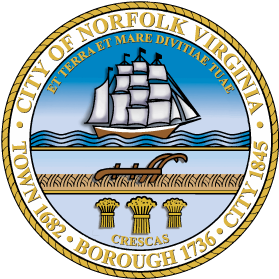
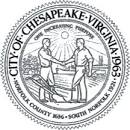
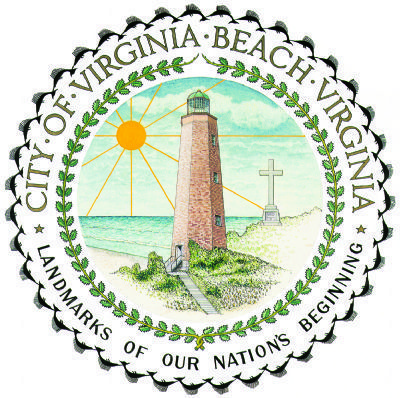
Recent Articles
-
CVMS-Bulletin-November-2025
Nov 28, 25 08:23 AM
CVMS Newsletter - Medical News and Commentary -
CVMS Membership Drive 2025
Oct 16, 25 10:53 AM
Information about the membership importance and benefits. -
Letter to Governor Youngkin re: COVID-19 Vaccine Recommendations
Oct 16, 25 10:45 AM
The Honorable Glenn Youngkin
Office of the Governor
P.O. Box 1475
Richmond, VA 23218
Dear Governor Youngkin,
On behalf of the Coastal Virginia Medical Society (CVMS), based in the Hampton Roads area of Sou…
Sign Up for the New CVMS Bulletin
Things You Need to Know
News Releases
from the
Virginia Beach Health Department
Norfolk Public Health Department
Chesapeake Health Department
The Roman Fasces was a symbol of strength and power occurring as a result of many binding together. It was made of multiple elm or birchwood rods about 5 feet long tied together and sometimes including an axe. It was carried by attendants to soldiers or powerful figures in ancient Rome. For us, it symbolizes that we are stronger and more powerful if we bind together in supporting our goals.
Medical Society of Virginia Updates
Upcoming Virtual CME Activities from MSV:
HER2-Positive Breast Cancer Treatment
COVID-19 Vaccine Information
Pfizer COVID-19 Training Sessions and Additional Vaccine Information
Includes a section on what to tell your patients
VDH Clinician Letters - COVID-19 updated from the Virginia State Health Commissioner


